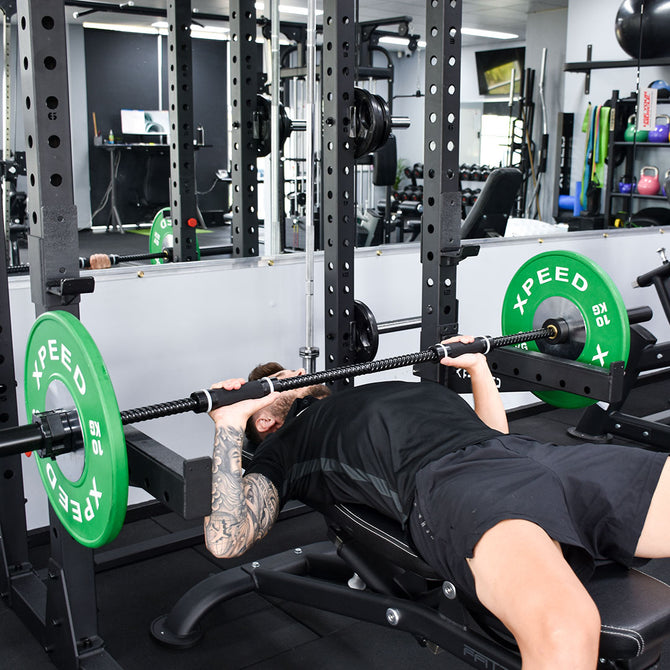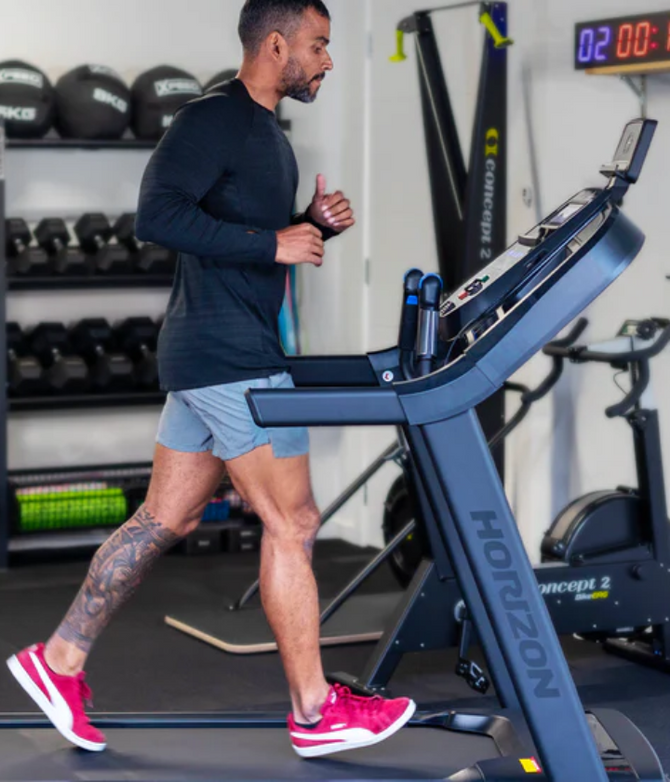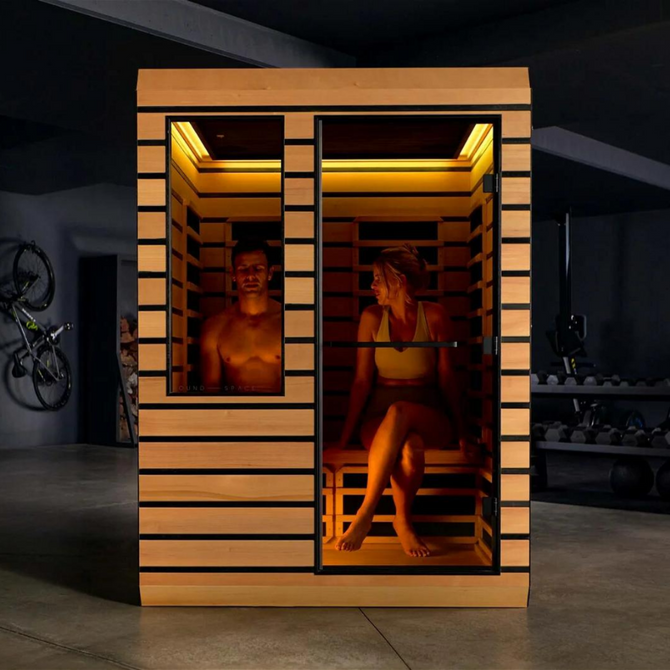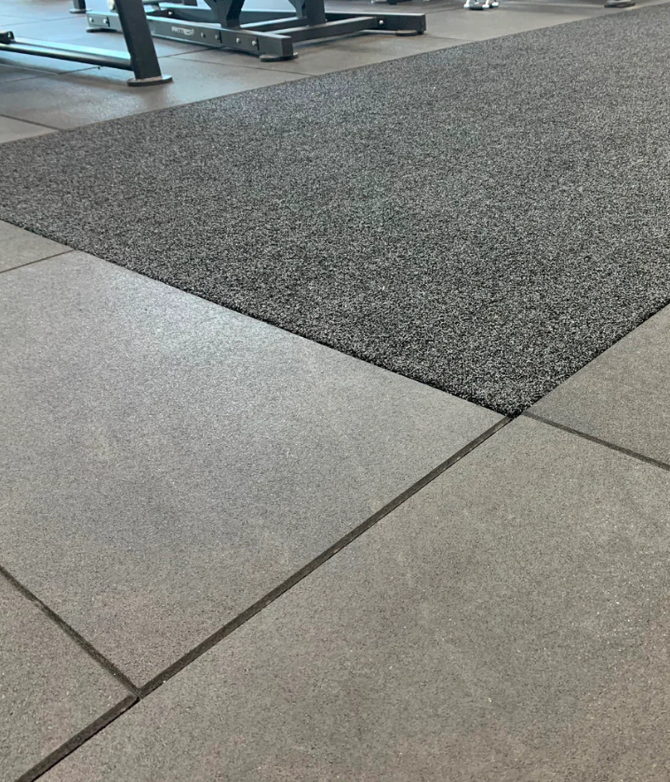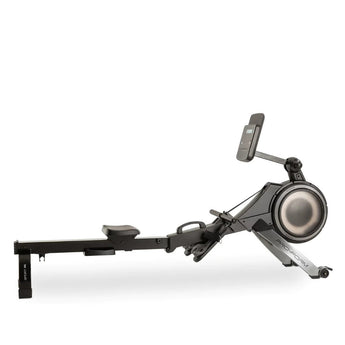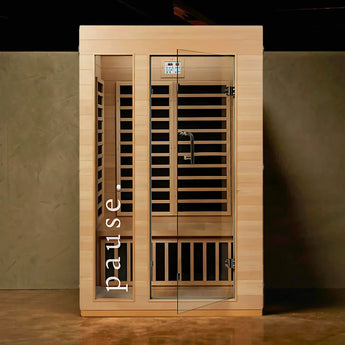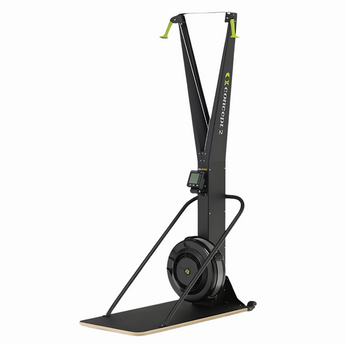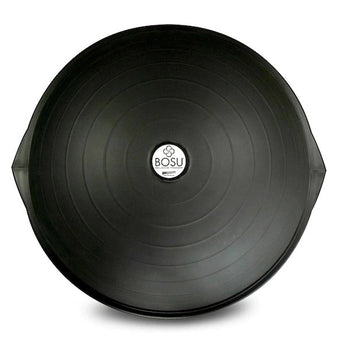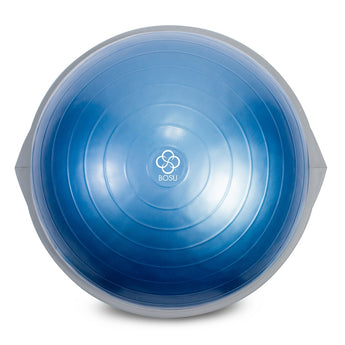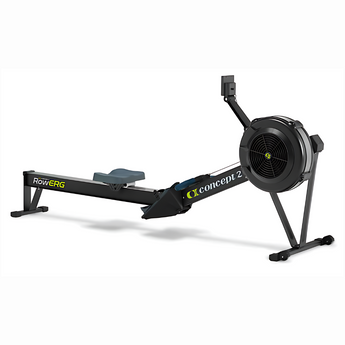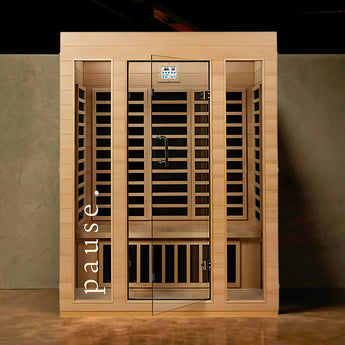The Prowler Sled. Your Strength & Conditioning Coach's Secret Weapon
Want to boost your metabolism by burning loads of calories, work a truckload of muscles and build lean muscle mass? Then the Prowler Sled or Speed Sled is just the ticket. Over the last several years it has continued to gain popularity and it's not uncommon to see one sitting on astro turf in most commercial facilities.
New to the sled? They're a basic training tool that's designed to slide across turf and they're easy to load weight onto thanks to the centrally located olympic sleeve. The prowler sled has two vertical posts at the back and horizontal posts at the front. The posts at the front allow you to attach items like battle ropes and harnesses for extra functionality and training versatility, which we'll touch on a bit later.
Simple to use Skip to the workouts!
In essence the sled is simple to use, you either push or pull it along. However, that's just your starting point, if you use the correct technique and apply the right training principles the sled will help you burn loads of calories and pack on lean muscle.
To do the basic sled push, stand in front of the the sled with a split leg stance just like your natural running position, lean forward slightly and grab hold of the upright handles/posts with slightly bent arms. You'll want to brace your core and maintain a neutral spine. If you're a beginner hold the handles higher, if you're more advanced hold the handles lower. Generally speaking, straighter arms is more advanced, especially on your shoulders, so start with slightly flexed arms as you get ready to push the sled.
From here drive the sled forwards. Your calves, hamstrings and glutes will be the main driving force here as your core works to transfer the load generated from your lower body through the upper body (torso) into your arms to push the sled forward. This requires a lot of muscles working together to get that sled on the move, so as well as the calves, glutes and hammies firing up, your obliques, stabilsers in your back and abs will do their thing too.

Top tips
Having said all of the above, these are the top tips to remember.
- Set up and maintain a neutral spine.
- Brace your core before you move and throughout the sled push. This will keep you stable, help generate power and transfer the load from your lower body to your upper body.
- Keep your foot stance the same as your natural running position. This will help you drive forward with as much force as possible.
- If you're a beginner keep a firm grip on the prowler sled, with slightly flexed arms.
- Have your torso and pelvis facing forwards.
- Ensure that your knees are in line with your feet and don't fall across the midline as you drive force into the ground.
Type of workout
Now that you've mastered the basics it's important to understand how and why you want to use the sled. So what 'type' of training do you want to do in order to get specific results? For example, a hammer is great tool for banging nails but terrible for washing dishes. So below we'll run through some examples of how you can use the sled for different styles of training to maximise your performance outcomes.
Speed and Power
Sled sprint drills are a fantastic way to boost your speed and power. This type of sled training works the muscles in the feet and lower legs, quads, hamstrings, glutes, shoulders and your core. Technique is incredibly important as this will help develop bonafide motor patterns and strengthen the aforementioned muscles that are critical for sprinting. Not to forget it will make you look like a legend in the gym.
Power
Power is defined as the ability to generate high amounts of force over a short period of time. Therefore, the idea with sled power training is to get the sled moving as explosively as possible and get it moving fast. So you need to get force into the floor as fast as possible to make this happen.
Power Drill 1
Weight: As a rough guide use 75 - 80 percent of your body weight.
Distance: 5 - 10 metres (the shorter distance is good for developing power, the longer you go the more you start to tap into working power endurance).
Sets: 4-6
Rest: 60-90 seconds
Power Drill 2
Weight: 80 - 85 percent of your max weight possible.
Distance: 5 metres - Push this weight as 'explosively' as possible.
Sets 6 - 8
Rest: 3-5 minutes between rounds. Longer rests for recovery are important during power training.
Speed
The idea with sled speed training is to apply more force into the ground as quick as possible. Which means you'll need a weight that is light enough you to push at a fast speed while also getting more force into the ground.
Weight: Use 30 - 40 percent of your body weight.
Distance: 5 metres - This kind of distance is excellent for focusing on your starting speed. To work on other speed qualities like endurance increase the distance. however, focus on nailing that starting speed first.
Sets: 4-6
Rest: 45-60 seconds between sets. If you're still breathing heavy... You're not quite ready to go again.

Endurance
A great addition to the sleds bag of tricks is that you can use it to utilise aspects of endurance training and sports performance. This basically comes down to the fact that you're working on or within a natural movement and it's a very functional exercise.
Weight: 25-40 percent of your max (you can go lower if need be)
Distance: Perform a 1-minute push, as consistently as you can, as fast as you can manage. Consistent pace is important here.
Sets: 5 - 10
Rest: 30-60 seconds rest
This is a great finisher to an overall endurance session.
Muscle Mass
Gaining lean muscle mass is a common goal for lots of gym goers and the good news is that the sled can be used for that purpose too. So if this is an overall goal, simply treat your reps, sets and weight under the principles associated with strength and mass training.
Weight: Roughly 70 - 80% of your maximum load.
Distance: 20 -30 metres. You'll want to push the sled at a constant medium pace. The weight should generally dictate this because it will be 70 - 80 percent of your maximum.
Sets: 4 - 6 placed at the end of a strength session.
Rest: 1 - 2 minutes between each set.
Top tips: For upper body mass use a higher grip, for a lower body mass use a lower grip.

Get creative
The great thing about the prowler sled is that as well as getting behind it and pushing it along the sled track you can attached things like Battle Ropes, a harness and TRX Bands to get creative and spice up not just your sled training but your workouts in general.
Battle Rope Pulls
By attaching a battle rope to the horizontal bars at the front of the sled you can convert it into a powerful training tool to build your back, shoulders, arms, abs and legs!
How to
Place 70 -80% of your max load onto the sled. As you stand facing the sled with a shoulder width stance, sit back slightly with your knees and hips slightly flexed. Keep a nuetral spine, brace the core and flex forward from the hips to have the chest slightly facing the floor. Think of a long lean spine with your shoulders wide. Hold the rope with both hands, with the preferred hand in front. Pull the rope towards you and continue alternating reaching, grabbing and pulling. Maintain correct form and work as fast and as smoothly as possible.
Weight: Roughly 70 - 80% of your maximum load.
Distance: 20 metres.
Sets: 3
Reps: 6 per set with 45 seconds between reps.
Rest: 2 minutes between each set.
Top tip: Less weight + longer rope builds muscular along with aerobic strength and endurance. Heavier weight + shorter ropes will build all-out strength and power.
Sled Pulls & Drags
Another huge tick on the list of functionality with the Prowler Sled is the ability to perform Sled Pulls or Sled Marches. The Xpeed Prowler Sled we range at Fitness Warehouse comes with a harness included. This simple addition adds a bunch of exercises included pulls, marches, drags, bear crawls and lateral pulls to your training aresenal.
As with any new toy the best piece of advice is don't be a gym hero and load up the weight for sled pulls. Learn the technique first and then grow from there.
Forward drags
With the harness attached to your body, forward drags force you into a forward leaning position similar to sprinting. This works the same movement pattern in the acceleration phase of sprinting.
Walk forward until the harness is taut and lean into your starting position. From here drive with force into the ground as fast as you can and sprint forward for your desired distance.
Weight: Use 30 - 40 percent of your body weight.
Distance: 10 metres - This kind of distance is excellent for focusing on your starting speed. To work on other speed qualities like endurance increase the distance. however, focus on nailing that starting speed first.
Sets: 4-6
Rest: 45-60 seconds between sets. If you're still breathing heavy... You're not quite ready to go again.
Top tip: Keep moving, whatever weight load you're trying to move, consistent movement makes the process easier.
This exercise is a great addition to your conditioning workouts or fits well as the finisher to a session.
Bear Crawls
Bear crawls work the arms, shoulders, chest and core. Not bad for a primal move we all forget about after childhood. By chucking on a harness and doing a bear crawl with the sled you're supercharging the exercise.
Dragging the sled with bear crawl creates an external load while you're in motion, forcing you to control the weight and the movement.
Weight: 20 percent of your maximum load.
Distance: 5 - 10 metres
Reps: 2 - 4
Rest: 45 - 60 seconds rest between sets.
This is another great workout finisher to add to your workout schedule.
Pulls
Place 40 - 60 percent of your max load onto the sled. As you stand facing the sled with a shoulder width stance, sit back slightly with your knees and hips slightly flexed. Grab hold of the handles, keep a nuetral spine, brace the core and flex forward from the hips slightly.
From this position step backwards at a consistent speed. Think of this exercise as a functional leg press, by the end of it your legs will be on fire.
Weight: Use 40 - 60 percent of your body weight.
Distance: 10 metres - This kind of distance is excellent for focusing on your starting speed. To work on other speed qualities like endurance increase the distance. however, focus on nailing that starting speed first.
Sets: 4-6
Rest: 45-60 seconds between sets. If you're still breathing heavy... You're not quite ready to go again.
Avoid these common mistakes
Going too hard, too early - Be mindful of loading the sled with the correct weight for the given exercise that you want to do. It's the easiest way to injure yourself.
Forgetting your core - A big part of sled work is the body's requirement to transfer the load generated from the lower body to the upper body to push the sled along. In order to do this the core is working at all times, which means you have to have it braced whilst you're working out. Losing stability in your mid section (spine and pelvis) reduces the amount of force production from your limbs. This type of instability can also lead to a higher risk of injury.
Foot strike: When people use the sled for the first time it's always feels a little bit funky and it's common to see people put one foot behind the other as if walking on a painted line, its far too narrow and reduces your performance. It's important to maintain your natural running stance when using sleds so that you're able to produce an adequate amount of force and work at speed.
Poor toe contact and alignment: Poor toe contact can have a knock on effect to your overall performance. Letting the toes (specifically the big toe) lose contact with the floor can cause the ankles to invert or evert or the knees to drop across the midline or move laterally. This increases injury risk and also limits your ability to produce power.
Poor form: It's important to note that safety should always be your first thought when it comes to training. Your goal should be to create a body that can move functionally and well forever. Because life is hopefully long. With sled exercises it's easy to get tired, lose correct technique and either over arch or slump the shoulders inwards. Not only can this affect your back but your shoulders as well. Before you start any drill it's good practice to check your form, brace your core and think of a nuetral spine.
Summary:
As you can see from the above, the humble Prowler Sled is hugely versatile in what it can bring to your training regime. To be honest we only kind of touched the surface with the possible exercises. It's easy to use, burns loads of calories, builds lean muscle mass, improves strength, improves power, improves acceleration and can help with injury prevention.
Happy sledding!
 Written by Fitness Warehouse Personal Trainer, Simon Mitchell.
Written by Fitness Warehouse Personal Trainer, Simon Mitchell. Simon has a Bachelor of Human Movement, is a certified FMS trainer and has worked in the fitness industry since 2003. Simon started his fitness journey as a trainer with iNform Health and Fitness before moving into commercial radio and then back into fitness with Bodyism in the United Kingdom and Australia. A career highlight was being one of Daisy Ridley's personal trainers on Star Wars IX - The Rise Of Skywalker.


